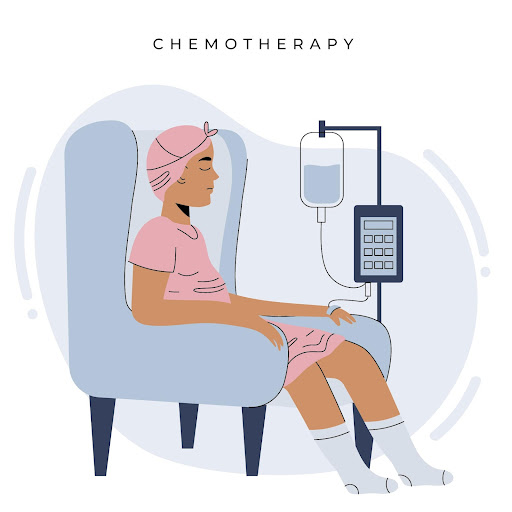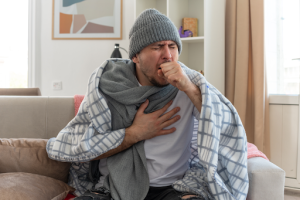Disclaimer:
This article is for information purposes only. It is not a substitute for medical advice or treatment. Seek medical care for your treatment.
What is thrombosis?
Thrombosis is a chronic condition where a blood clot or “thrombus” creates a blockage inside a blood vessel, in your body and your heart. This is an alarming condition because the clots inside the blood vessels can obstruct the blood flow. The clot can move anywhere in your body for instance, it can move to your lungs or brain and can lead to threatening conditions. If the clots are left untreated they can cause grave complications.
Who is more likely to get thrombosis?
Generally, it is more prevalent in older people but people of any age can have thrombosis. Some medical conditions can lead to thrombosis are mentioned below:
- Cancer
- Diabetes
- Heart ailment
- Atrial fibrillation
Thrombosis is a very common issue and can be the reason of 1 in 4 deaths universally. Some of the perilous conditions that happen are:
- Heart attack
- Heart stroke
- Pulmonary embolism
Types of thrombosis:
There are two types of thrombosis based on the type of blood vessel where it begins:
Arterial thrombosis:
When a thrombus develops in an artery it is called arterial thrombosis. Arteries are the blood vessels that transfer oxygenated blood from your heart to the rest of the areas of your body. Arterial thrombosis may be minor or critical on the basis of the size of the thrombus and the area of the artery in which it develops. It is the prime cause of heart attacks and strokes.
Venous thrombosis:
It develops in the veins, which are blood vessels that move deoxygenated blood back to your heart from the body. Venous thrombosis is the most common source of pulmonary embolism. A venous thromboembolism (VTE) is a wider term that represents blood clots in veins. Deep vein thrombosis (DVT) and pulmonary embolism (PE) are its two subtypes. DVT happens when a thrombus develops in a deep vein, generally within your arm, leg or pelvis. PE happens when a DVT detaches and moves via the bloodstream to the lungs, causing an obstruction in the blood vessel of the lungs.
Causes of thrombosis:
Our blood flow depends on a balance or homeostasis. A clot occurs because of an imbalance in certain components or the issues harming the blood vessels.
Arterial thrombosis is generally caused by fatty deposits atherosclerosis that makes your arteries rigid and develops clots. This happens when a clot develops over a tear or break in a section of plaque that leads to heart attacks. Some of the similar problems are:
- Heart valve disease: issues with your heart valves, such as narrowing, can lead to clotting.
- Atrial fibrillation: in this the upper chambers of your heart beat so rapidly, they can’t pump blood in the right manner. Blood that stays in these chambers create clots, which can transfer anywhere in your body. Atrial fibrillation is a typical starting point of a stroke.
- High blood pressure and cholesterol: can harm your heart and blood vessels, restrict circulation and result in clotting.
Factors that contribute to atherosclerosis are:
- Smoking
- Hypertension
- Diabetes
- High cholesterol
- Obesity
- Family history of atherosclerosis
A thrombus forms when blood flow is slow because of being inactive for a long period of time. Some of the reasons of blood clots are:
- Obesity
- Fractures
- Some medicines especially those with estrogen
- Injury to the deep veins in the arms, legs or pelvis
- Autoimmune disorders that support thickening of the blood
- Some inherited disorders
Immobility for too long, smoking, obesity, having cancer, taking hormone therapies, being dehydrated, having DVT in the past can contribute to venous thrombosis.
Symptoms of thrombosis:
The symptoms of thrombosis wholly rely on the size and location of the thrombus. Arterial and venous clots can develop anywhere in your body but usually they form in your legs. Anyhow, clotting happens more frequently in the areas with very small blood vessels especially your brain, lungs, in arms and legs. Obstruction that develop outside your lungs show following symptoms:
Arterial thrombosis:
All the tissues, cells and organs of our body rely on a substantial supply of blood to pull through and how our arteries get that supply. A thrombus that obstructs an artery will create a problem called ischemia, which means the cells of our body will expire if they will not get required blood flow. Some of the initial symptoms of ischemia that form a blockage are:
- Evident changes in your skin colour: areas beyond the obstruction will look dusty as compared to the other areas.
- Change in temperature of the afflicted area: insufficient blood flow will make the affected part of your body feel cooler when in contact than others.
- Tiredness: this can encompass not being able to move the afflicted area.
- Numbness or tingling sensation: at times it includes agony and discomfort in the afflicted area.
The symptoms that follow are more intense. They encompass:
- Wounds, blisters or sores: these appear when the skin tears open.
- Shedding of the skin: this happens when skin falls off or separates from the tissues beneath.
- Necrosis: this prompts skin and tissues to die and turn black. The dead or dying tissue area will slowly spread outward.
Venous thrombosis:
Obstructions of veins which repeatedly happen in your legs, constraint how promptly blood can travel back to your heart. That puts stress on your veins, which leads to the leakage of fluid and blood into the surrounding tissues. When this happens the symptoms are:
- Changes in skin tone, specifically redness of the afflicted area.
- Fluid buildup that leads to the inflammation.
- Skin that is evidently warmer as compared to the other areas.
Conclusion:
Thrombosis can be really life threatening. The best one can do is to try to prevent thrombosis. Consult your doctor regarding your health condition. Early detection and its treatment elevate the chances of recovery and minimize the risk of any further complications.




